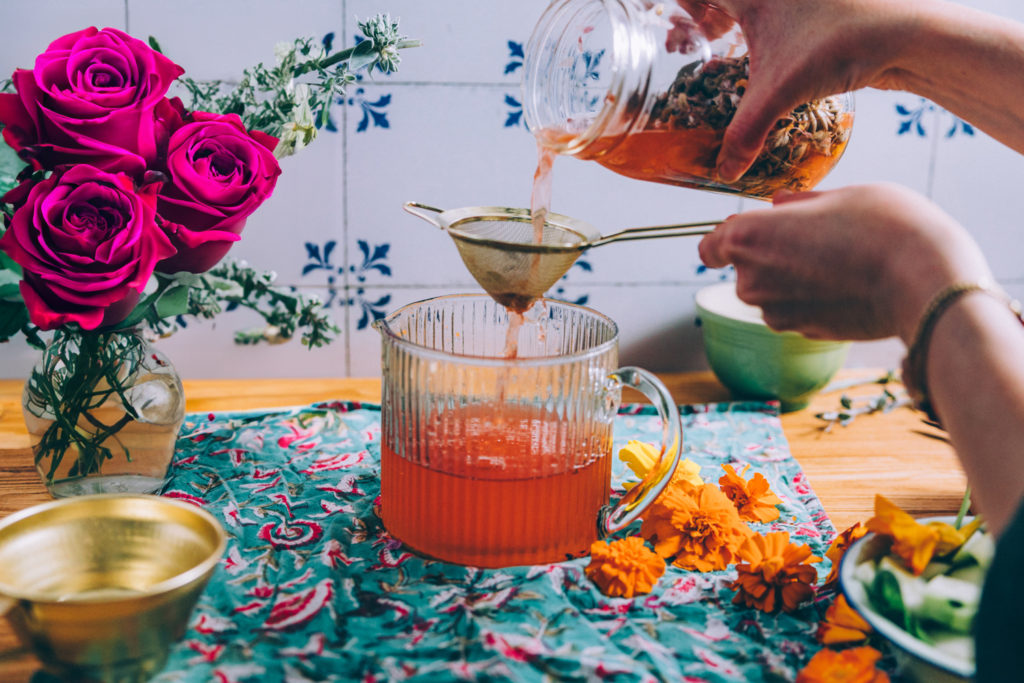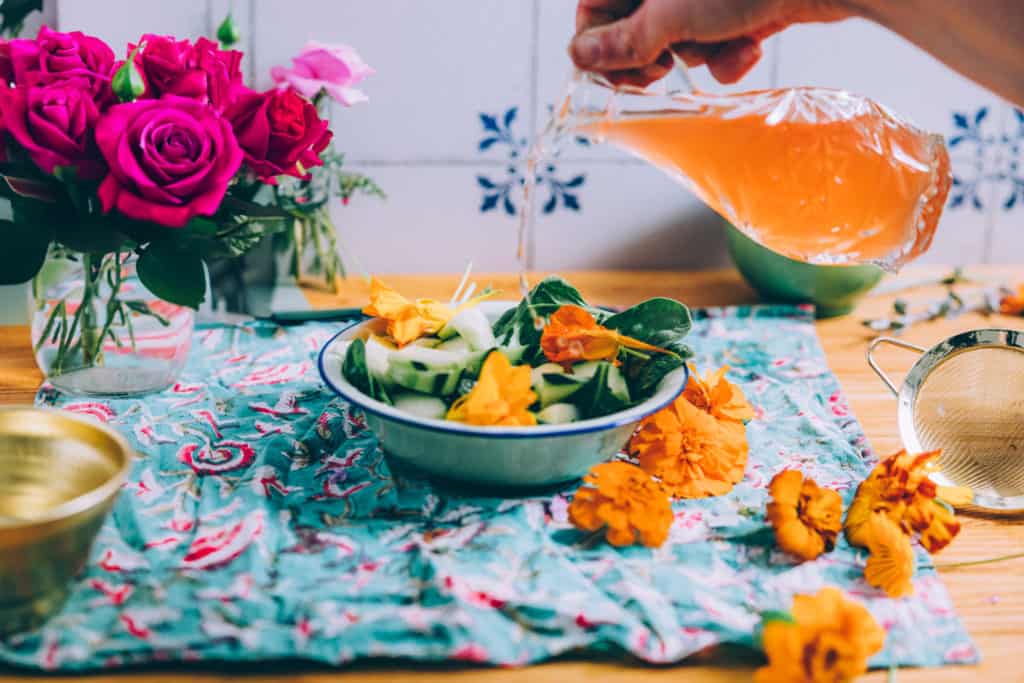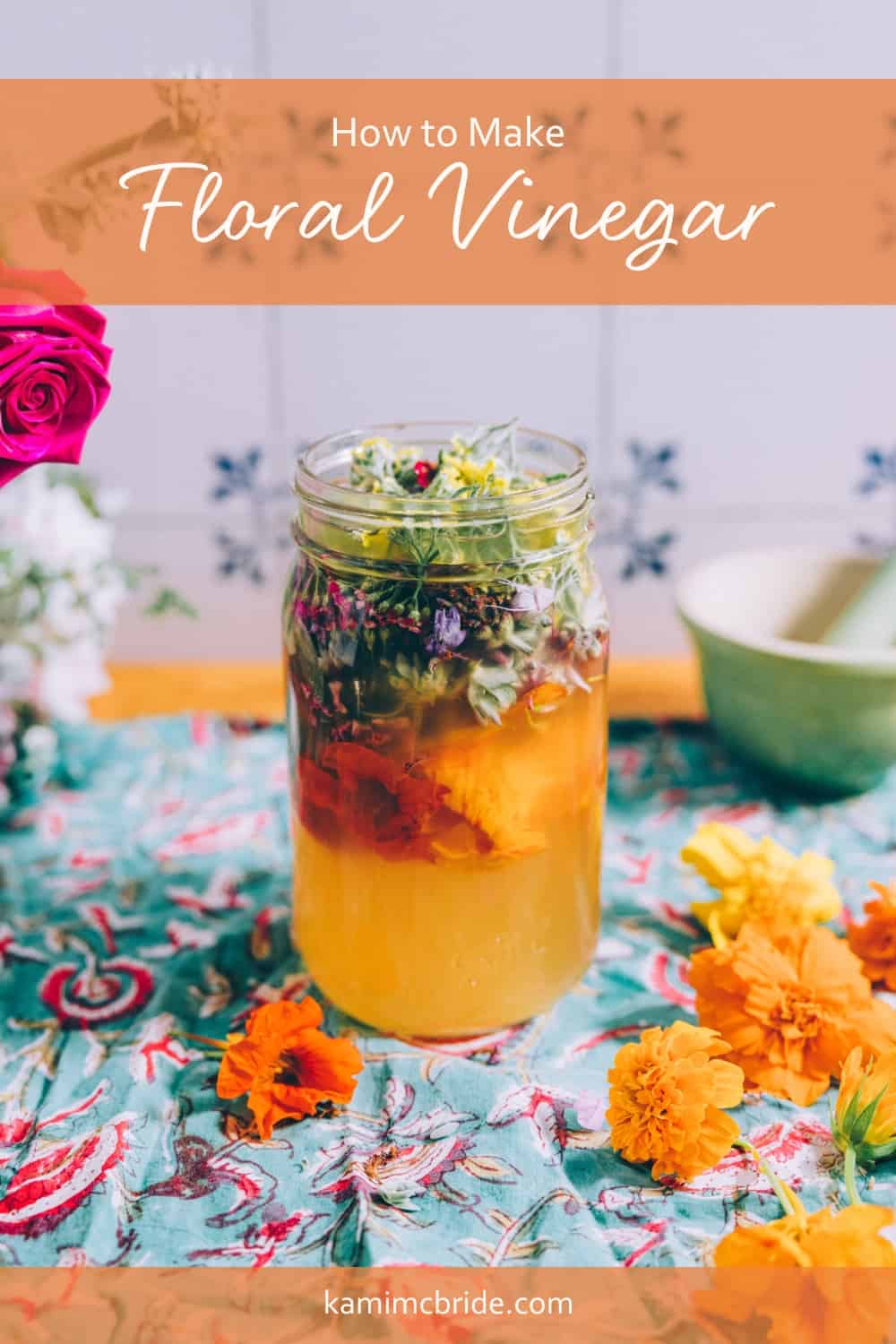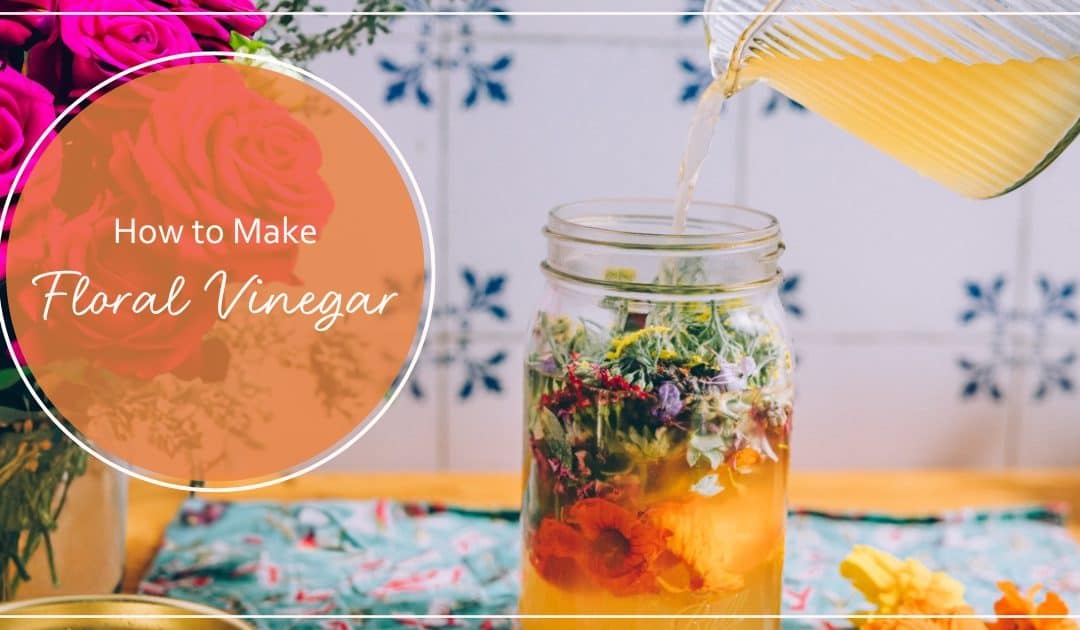You’ll feel like you have a treasure chest in your kitchen when the pantry is full of enticing herbal condiments like this flower infused vinegar. When people ask you, “What is in this salad?” and you say, “Floral Vinegar,” the only thing they can really say is, “What? What is that?” Then you use the opportunity to evangelize about the virtues of cooking with herbs.
“Feel like you have a treasure chest in your kitchen when the pantry is full of enticing herbal condiments like this flower infused vinegar.”

How to Use Floral Vinegar
Herb- and flower-infused vinegars are great to have around your pantry. A drizzle of floral vinegar can spice up your salad dressings and marinades, tenderize meat, and flavor vegetables.
Vinegar also enhances the nutritional value of any meal because it’s a superb medium for extracting minerals from herbs and foods. When you steep herbs and flowers in vinegar, the vinegar pulls vitamins and minerals from the plants.

What Flowers to Infuse
To make floral vinegar, use any combination of flowers such as lavender flowers, calendula petals, rosemary flowers, thyme flowers, sage blossoms, or rose petals.
Here’s what the batch in this video contains:
- 1 cup nasturtium flowers
- 1 cup rose geranium flowers
- 1/4 cup lavender flowers
- 1/2 cup sage flowers
- 1/4 cup yarrow flowers
Learn how to identify and use beautiful and delicious edible flowers and herbs! Sign up for Edible and Medicinal Flowers Herb Walk and Video Tutorial and get started now
Five-Flower Herbal Vinegar
Ingredients
- 3 cups fresh, whole, edible garden flowers
- 4 cups apple cider vinegar
Instructions
- Fill a glass jar with flowers.
- Pour vinegar over the flowers, filling the jar to the top with vinegar. Make sure that the vinegar covers the flowers by at least a couple of inches.
- If you are using a metal lid, cover the opening of the jar with two sheets of wax/greaseproof paper, and then put the lid on, or use plastic lids.
- Store the vinegar in a cool, dark place for one month. Shake it once in a while and occasionally check to see if you need to add more vinegar, as some of it may have been soaked up by the plant material.
- Place a funnel into the opening of a clean, sterilized jar and lay muslin over the top of the funnel.
- Pour the vinegar through the muslin, being careful not to let the contents fall out of the side of the cloth.
- Let all the vinegar strain through the cloth and funnel into the clean jar.
- Don't squeeze what is in the muslin, or water will squeeze out of the fresh herbs, giving you cloudy vinegar or a shorter shelf life. Just let liquid drip through.
- Discard the strained flowers into the compost. The liquid left behind is your herbal vinegar.
- Store in a clean container in a dark cabinet out of heat, light, and temperature variation. Your vinegar should last for about one year. Make sure you store the vinegar in a container with a plastic or cork lid. The vinegar will eat any metal it comes into contact with. If your vinegar turns black, has floating chunks, or develops mold or a funny smell, throw it away.

The Power of Home-Crafted Vinegar
Floral vinegar is easy to make and can add a variety of flavors to your meals. Not only does your meal contain herbs and flowers that are specific to a particular season, but if you harvested the flowers yourself, sunshine, fresh air, joy, and the beauty of the experience are also infused into that bottle.
When I pour homemade floral vinegar into salads and soups, I find myself smiling from the memory and feeling of creating them. That really does make your food more delicious.
How do you like to use infused vinegars? What are your favorite edible flowers? Share your experience in the comments!
More Resources
Decorate your Food: Six Spicy Edible Flowers
Edible Flowers Pesto Recipe
Healthy Raspberry Vinaigrette Recipe






